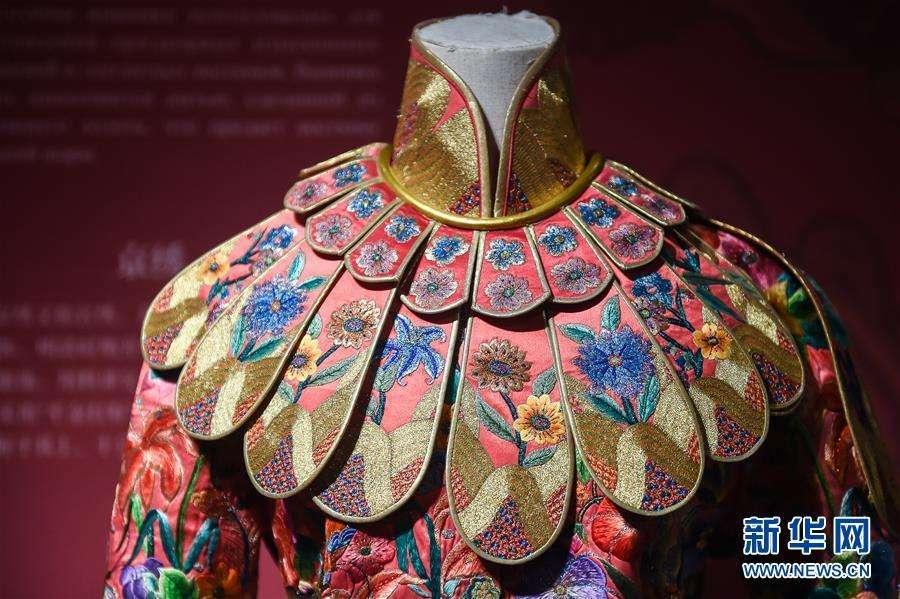HANGZHOU, Aug. 13 (Xinhua) -- Even from a pretty close distance, the very fine needle in Lou Shuqi's hand is barely visible, giving the impression that she was using an invisible thread to restore the antique quilt.
The 290-cm-long and 275-cm-wide yellow Dharani Sutra Quilt was unearthed from the tomb of the Empress Dowager Cixi, a legendary female politician who had the reins of power for decades in the Qing Dynasty (1644-1911).
Apart from the quilt, some 20 mortuary objects belonging to Cixi and an imperial concubine of Emperor Qianlong are on display at the China National Silk Museum in Hangzhou, capital of east China's Zhejiang Province. The exhibition, starting Aug. 8, will last for three months.
Restoration work of the antiques took repairmen eight years.
"Restoring textile heritage needs not only a calm mind but also physical strength," said Lou. In her past 20 years of work, she had to change her reading glasses almost every year.
Lou, a senior restorer and the chief instructor of the restoration project, said the precious textile relics were excavated from the eastern royal tombs of the Qing Dynasty in Zunhua, north China's Hebei Province, some 120 km from Beijing.
The Dharani Sutra Quilt, made in present-day Nanjing, was woven with many patterns and some 25,000 characters, including a pagoda, Diamond Sutra and Heart Sutra.
"The design was so delicate and complicated that it was never possible to create such a large quilt without the support of advanced loom technology," said Zhou Yang, director of the museum's technology department, adding that the quilt is of high scientific research value.
Zhou said it was this quilt that wrapped Cixi when she was buried and it is the first time that the precious item is being shown to the public after restoration.
"The quilt of a golden color embellished with 820 pearls must have been splendidly shinning at that time. Unfortunately, the pearls were all stolen," she said.
Wang Shujuan, deputy director of the department, said the restorers left all the thread residues that were used to tie pearls to the quilt, hoping visitors could imagine how magnificent and gorgeous it was with the pearls on.
According to Wang, the finest thread the repairmen used for restoring the silk fabric was even thinner than one-ninth of a hair.
"The viewers can hardly notice the traces of restoration," she said.
Apart from the quilt, a restored imperial robe of Cixi bearing all the 12 symbols of sovereignty is also on display.
The symbols, a series of ornaments such as the dragon and the sun, showed the emperors' distinguished status and were usually embroidered on the robes of royal family members and officials. In the Qing Dynasty, only emperors could have them all on their robes.
However, Cixi was dressed in such a robe decorated with all the 12 symbols after death.
The robe was also embroidered with 31 characters of Fo, meaning Buddha in Chinese, using gold thread and decorated with pearls, which showed the exalted status of the dowager, said Zhou.
The China National Silk Museum was opened to the public in 1992 and it is the biggest research museum in the world that integrates antique collection, research, inheritance and display of textile clothing, said Zhao Feng, curator of the museum.
Zhou said the museum is like a "hospital" for textile fabrics where the repairmen perform "surgeries" on the textile heritage on the principle of repairing the old as the old.
"As a fabric restorer, it is our duty to save the 'sick' relics," she said. Enditem




 A single purchase
A single purchase









